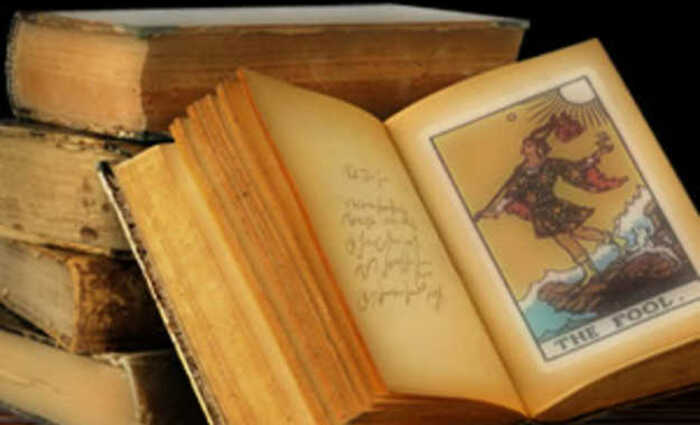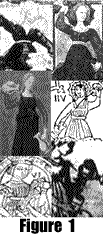
Iconology of the Temperance Cards
From the Iconology Section of the Robert O'Neill Library
Introduction
The six Temperance cards surviving from the 15th and 16th century are shown in Figure 1. In the ordering we are adopting here, the temperance cards are numbered six of the trumps. The imagery is perhaps the most consistent among all of the Tarot trumps symbols. All six figures show as woman pouring water from one pitcher to another. Even the gowns are similar with the same high waistband. The only real difference among the images is which hand is uppermost and the vote is even: 3 to 3.
The imagery is perhaps the most consistent among all of the Tarot trumps symbols. All six figures show as woman pouring water from one pitcher to another. Even the gowns are similar with the same high waistband. The only real difference among the images is which hand is uppermost and the vote is even: 3 to 3.
The symbolism for the virtue of Temperance was standardized by the 15th century, and a similar image appears in the so-called Tarocchi de Mantegna.
The religious tradition
The representations of the virtue of Temperance appear to be restricted to the religious art tradition. Though rare examples may existed, I have never located an image of Temperance in the Triumphal, Dance of Death, or Apocryphal traditions. However, within the religious art tradition the image is quite common. Hourihave (2000) lists the location of 71 representations of Temperance.
The example in Figure 2 is from a psalter ~1402 and shows a woman in a long tunic pouring from one vase to another. Other examples can be found in Ferguson (1954, plate 60) and Gombrich (1972, plate 80). A Temperance image from the 11th century can be seen in Katzenellenbogen (1939, fig. 34).
Temperance is a Greco-Roman natural virtue that was adopted by Christianity as one of the Cardinal or Moral Virtues. It is the first and lowest of the Platonic and Pythagorean virtues, governing the lowest part of the soul, the basic animal instincts. By the time of the Tarot in 15th century Italy, the imagery was quite consistent and unmistakable.
As far as I have been able to determine the image was not used in other contemporary artistic traditions. The evidence does not seem to support the idea that the image had other esoteric connotations. There are later (17th century) alchemical symbols that bear some resemblance to the Temperance symbol but it speculative to argue that this relationship would have been recognized two centuries earlier.
Interpretation
The 15th century card-player would have recognized the symbol for the virtue of Temperance. The symbolism was quite consistent and readily available in churches and public art of the 15th century. The symbol would most likely have elicited a sense of moral obligation to control the appetites and live a life of moderation.
A better educated player might have recognized the first of the Pythagorean virtues that they had read about in Iamblicus. This might have elicited additional responses in the form of a challenge to overcome the lowest instincts in the human soul and rise to a life with more control and moderation.
There is always the possibility that some would have seen alchemical connotations in the figure of a woman handling a fluid and perhaps carefully measuring ingredients involved in an alchemical procedure or even mixing a magical potion. But while such connotations are possible, the evidence supports nothing more than a literal translation of the image of Temperance.



